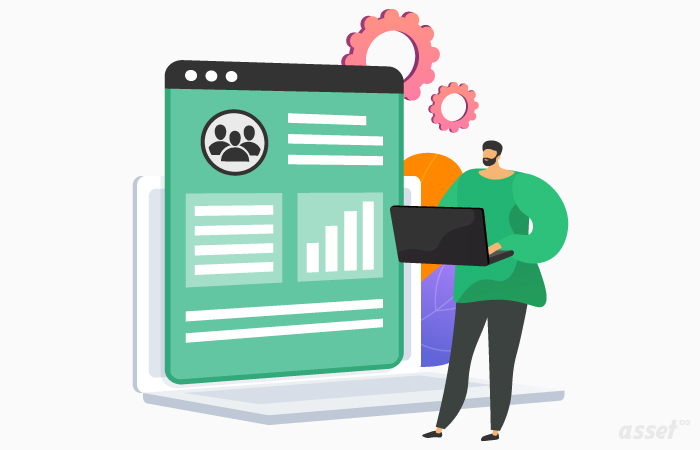It is evident that most organizations face significant challenges related to tracking of assets, their quantity, condition at present, and the depreciated status of the assets. This job is primarily done with the help of spreadsheets keeping records and maintaining a fixed asset register (FAR) or an ERP system.
Periodical physical verification is the only method that is being used to update the records accurately, which in itself involves a lot of effort and ambivalent processes.
The organizations are aware of the criticality of the aspect that accurate estimation of the fixed asset inventory can only guarantee precise and reliable fixed asset accounting. Thanks to the fixed asset accounting system which is very helpful in these aspects.
However, the task of maintaining a physical inventory register for fixed assets can be really daunting. Budget restrictions and lack of readily available systems are the other reasons - why organizations start with the orthodox and rudimentary asset tracking methods.
How Is Asset Tracking System Designed?
The challenges are propelling organizations to opt for automated processes that can estimate the asset inventory at any point.
The asset tracking system is designed to be open to the users and can help in tracking the assets by the users as well as access critical resource information within a common tracking platform.
Studies have shown that over 90% of successful equipment utilization redeployments come from an active inventory system and not the excess warehouse procedure.
Fixed asset accounting records capture depreciation of assets, support company financial reporting, and are primarily used, if not exclusively, by accountants.
Without access to a dynamic asset tracking database, end-users have been known to create their own private warehouse of information via spreadsheets and desktop databases.
In addition to this, an overly high capital-expense dividing lines leave many assets, which otherwise require tracking, without system coverage.
For example, you may still be required to track a group of hospitals, hotels, or governmental agencies for calibration, maintenance, security, IT, contractual or regulatory reasons.
Absence of Asset Tracking System
Fixed asset accounting system provides you the real-time data of available assets, assets location, assets status. In the absence of an asset tracking system, the equipment information structure often disintegrates into a series of incongruous databases, which might not collate into a composite database.
This has led to an escalation in the consolidation of maintenance, calibration, and IT asset management software into one amalgamated asset tracking and management software.
At some level, these exorbitantly priced ERP's provide effective accounting integration, but the sole reliance on them for true asset management leads to asset information disintegration.
How Asset Tracking and Management Software Addresses the Problem?

The following are the scenarios, how asset tracking management software addresses the problem. Let's Analyze.
- Asset Tagging & Tracking is a proven powerful asset tracking and reporting solution used by many companies. It supports tracking of assets in governmental agencies, companies, customers for leased assets, special tooling assets, IT assets, laboratory equipment, office assets, test, and manufacturing assets.
- Inventory tracking software helps in managing the stocks in the satellite as well as parent warehouses for effective usage of the available assets.
- Preventive Maintenance is an effective system used in calibration, maintenance, repair, product management, and work schedule management. It also helps in generating tickets and reminders for maintenance.
- Asset Purchase Requisition Software assists in decision taking the procedure for purchase and allotment of assets within an organization. It also enhances the transparency in the system and ensures fair-play for vendor allocation.
- Asset Depreciation Management ensures proper maintenance of assets within cost limits and optimal usage during the useful life of the asset.
- User Management provides the system administrator rights to monitor restricted user visibility and streamlines the user interface at different hierarchical levels and locations.
- Asset Management generates Reports & Graphs that enhance the transparency and traceability of assets leaving an audit trail for accounting purposes.
Asset Infinity bolts onto most ERP systems to provide central accounting records with current automatic accountability updated transactions, rather than cumbersome and outdated wall-to-wall inventories every year.
Using the above-described system, almost 80% of the assets will have been automatically inventoried in the system within one inventory cycle.
EndNote:
The bottom line is that Asset Infinity takes your asset management to a new height and provides improved asset accountability and reduced risk of loss through more timely and efficient inventorying methods.
It also eliminates hidden costs and inefficiencies of fragmented information databases, enables better visibility and control of assets supporting critical projects pivotal in the role.
Recommend To Read: How to Avoid Redundant Capital Purchases with Asset Register Management Software
Furthermore, it also helps to avoid any wastage of money on unnecessary capital expenditures for resources that you already own and can be redeployed through smarter asset management processes.
In simple words, a fixed asset accounting system enables you to keep track of fixed assets. It ensures that assets are safe and secured and makes assets accountable. Therefore, it is important for organizations to invest in a fixed asset accounting system.

















































.webp)
.webp)
.webp)
.webp)
.webp)
.webp)
.webp)
.webp)
.webp)

.svg)




.webp)
.webp)











































.png)
.webp)



















